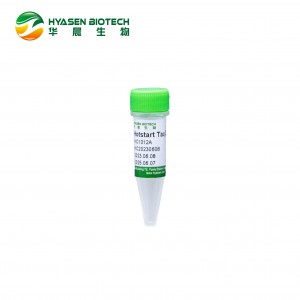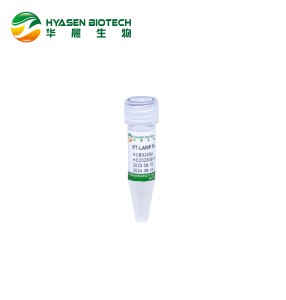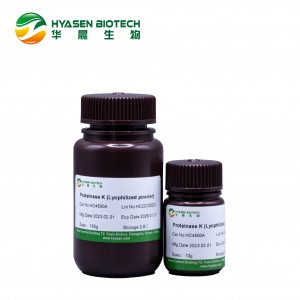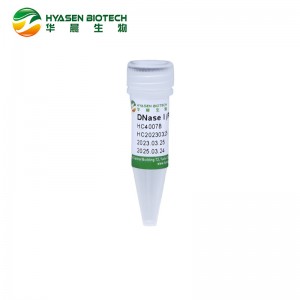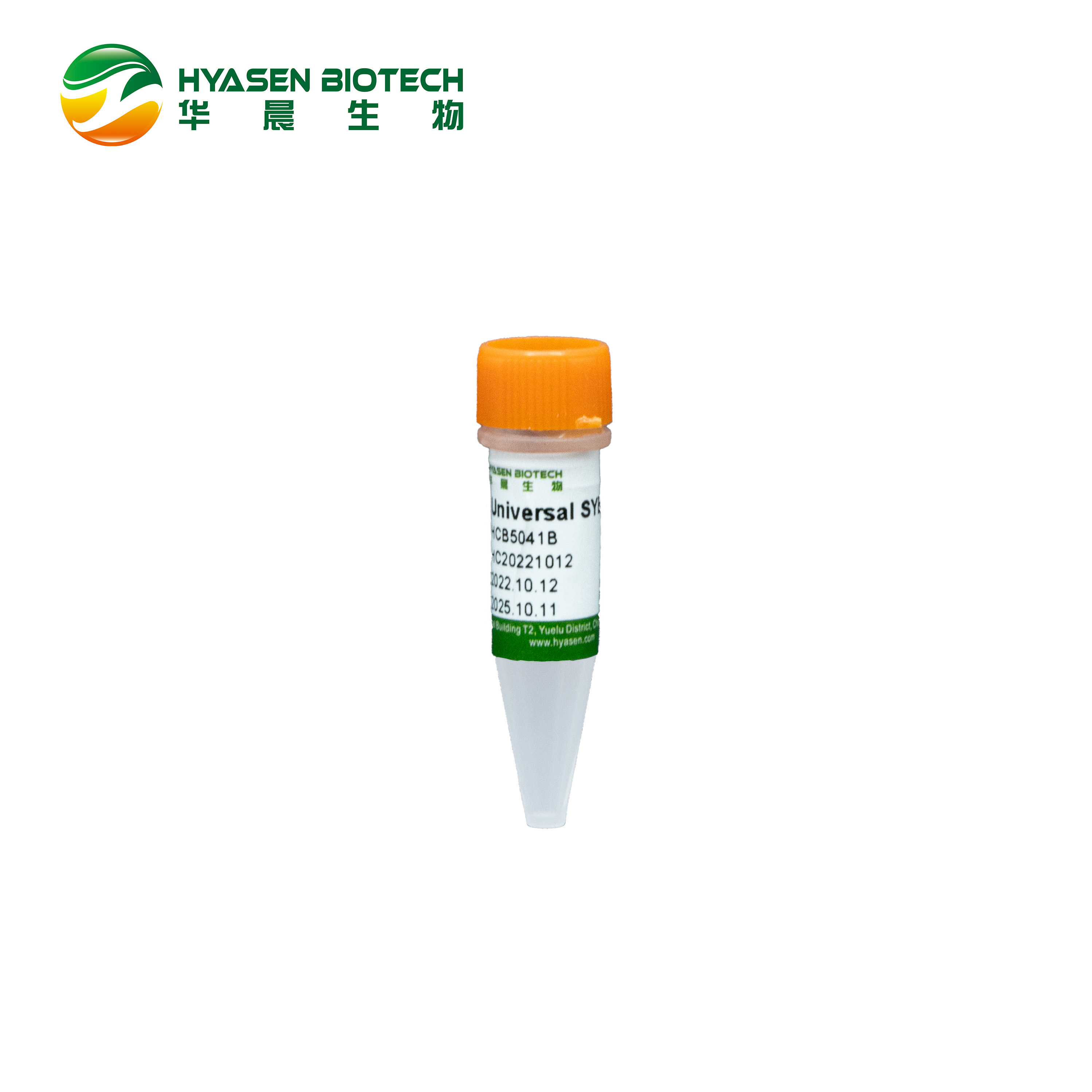
Universal SYBR GREEN qPCR Premix (Blue)
Cat No: HCB5041B
Universal Blue qPCR Master Mix (Dye Based) is a pre-solution for 2×real-time quantitative PCR amplification characterized by high sensitivity and specificity, is blue in color, and has the effect of sample addition tracing. The core component Taq DNA polymerase uses antibody hot start to effectively inhibit non-specific amplification due to primer annealing during sample preparation. At the same time, the formula adds the promoting factors to improve the amplification efficiency of PCR reaction and equalize the amplification of genes with different GC contents (30 ~ 70%), so that quantitative PCR can obtain a good linear relationship in a wide quantitative region. This product contains special ROX Passive Reference Dye, which is applicable to most qPCR instruments. It is not necessary to adjust the concentration of ROX on different instruments. It is only necessary to add primers and templates to prepare the reaction system for amplification.
Components
Universal Blue qPCR Master Mix
Storage conditions
The product is shipped with ice packs and can be stored at -25℃~-15℃ for 18 months. It is necessary to avoid strong light irradiation when storing or preparing the reaction system.
Specification
|
Concentration |
2× |
|
Detection method |
SYBR |
|
PCR method |
qPCR |
|
Polymerase |
Taq DNA polymerase |
|
Type of sample |
DNA |
|
Application equipment |
Most qPCR instruments |
|
Product type |
SYBR premix for real-time fluorescence quantitative PCR |
|
Apply to (application) |
Gene Expression |
Instructions
1.Reaction System
|
Components |
Volome(μL) |
Volome(μL) |
Final Concentration |
|
Universal SYBR GREEN qPCR Premix |
25 |
10 |
1× |
|
Forward Primer (10μmol/L) |
1 |
0.4 |
0.2μmol/L |
|
Reverse Primer (10μmol/L) |
1 |
0.4 |
0.2μmol/L |
|
DNA |
X |
X |
|
|
ddH2O |
up to 50 |
up to 20 |
- |
[Note]: Mix thoroughly before use to avoid excessive bubbles from vigorous shaking.
a) Primer concentration: The final primer concentration is 0.2μmol/L, and can also be adjusted between 0.1 and 1.0μmol/L as appropriate.
b) Template concentration: If the template is undiluted cDNA stock solution, the volume used should not exceed 1/10 of the total volume of the qPCR reaction.
c) Template dilution: It is recommended to dilute the cDNA stock solution by 5-10 times. The optimal amount of template added is better when the Ct value obtained by amplification is 20-30 cycles.
d) Reaction system: It is recommended to use 20μL or 50μL to ensure the effectiveness and repeatability of target gene amplification.
e) System preparation: Please prepare in the super clean bench and use the tips and reaction tubes without nuclease residue; it is recommended to use the tips with filter cartridges. Avoid cross contamination and aerosol contamination.
2. Reaction program
Standard Program
|
Cycle step |
Temp. |
Time |
Cycles |
|
Initial denaturation |
95℃ |
2 min |
1 |
|
Denaturation |
95℃ |
10 sec |
40 |
|
Annealing/Extension |
60℃ |
30 sec★ |
|
|
Melting curve stage |
Instrument Defaults |
1 |
|
Quick Program
|
Cycle step |
Temp. |
Time |
Cycles |
|
Initial denaturation |
95℃ |
30 sec |
1 |
|
Denaturation |
95℃ |
3 sec |
40 |
|
Annealing/Extension |
60℃ |
20 sec★ |
|
|
Melting curve stage |
Instrument Defaults |
1 |
|
[Note]: The fast program is suitable for the vast majority of genes, and standard programs can be tried for individual complex secondary structure genes.
a) Annealing temperature and time: Please adjust according to the length of primer and target gene.
b) Fluorescence signal acquisition (★): Please set the experimental procedure according to the requirements in the instructions for use of the instrument.
c) Melting curve: The instrument default program can be used normally.
3. Result Analysis
A minimum of three biological replicates were required for quantitative experiments. After the reaction, the amplification curve and melting curve need to be confirmed.
3.1 Amplification curve:
The standard amplification curve is S-shaped. Quantitative analysis is most accurate when the Ct value falls between 20 and 30. If Ct value is less than 10, it is necessary to dilute the template and carry out the test again. When the Ct value is between 30-35, it is necessary to increase the template concentration or the volume of the reaction system, so as to improve the amplification efficiency and ensure the accuracy of result analysis. When the Ct value is greater than 35, the test results cannot quantitatively analyze the expression of the gene, but can be used for qualitative analysis.
3.2 Melting curve:
The single peak of the melting curve indicates that the reaction specificity is good and quantitative analysis can be performed; if the melting curve shows double or multiple peaks, quantitative analysis cannot be performed. The melting curve shows double peaks, and it is necessary to judge whether the non-target peak is primer dimer or non-specific amplification by DNA agarose gel electrophoresis. If it is a primer dimer, it is recommended to reduce the primer concentration or redesign primers with high amplification efficiency. If it is non-specific amplification, please increase the annealing temperature, or redesign the primers with specificity.
Notes
Please wear the necessary PPE, such lab coat and gloves, to ensure your health and safety!
This product is for research use ONLY!






